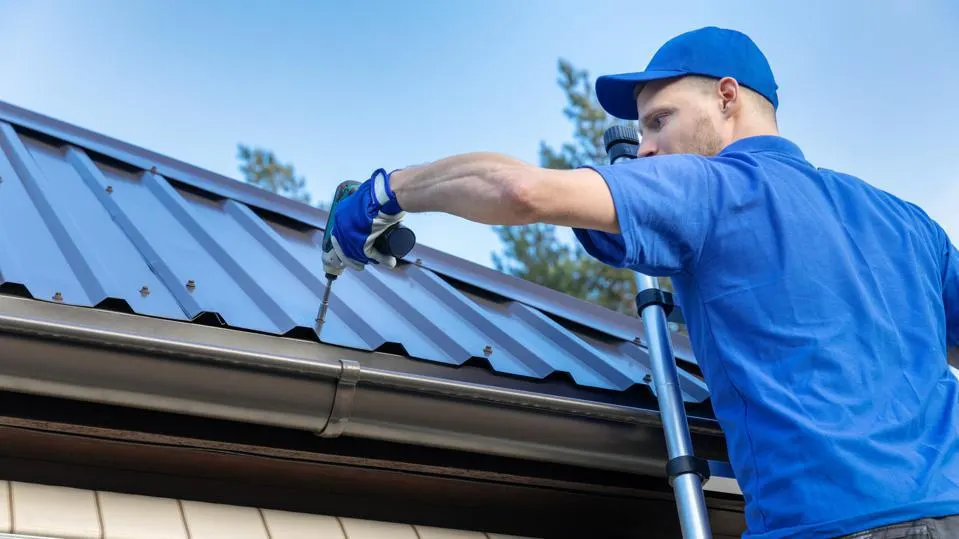An efficiently ventilated roof features an array of intake and exhaust vents for air intake and outtake, such as soffit vents, powered vents (such as turtle or Air Hawk vents), ridge vents or any combination thereof.
Without proper ventilation, heat from your living spaces may seep into your attic and warm the ceilings, requiring your air conditioner to work harder, leading to higher energy costs and energy bills.
Extends the Life of Your Roof
Heat stress can quickly damage shingles, necessitating costly roof repair or replacement costs. Proper ventilation helps regulate attic temperatures to protect shingles from damage while prolonging their lifespan.
Energy bills also decrease when air can freely circulate throughout the attic, since lack of ventilation causes it to act like a furnace during summer months and forces air conditioning systems to work overtime, increasing your bills in turn.
Moisture buildup in attics is a serious problem that often results from improper ventilation, as a lack of airflow creates the perfect conditions for mold growth to form, which in turn damages roof sheathing and other materials throughout your home.
Keeps Your Home Cooler
Roof ventilation should provide air circulation throughout the attic space and into living spaces to maintain cooling while avoiding moisture issues in the attic. When working efficiently, roof ventilation allows airflow between them both – helping keep it cool while preventing moisture issues in living spaces below.
Unventilated attics allow heat from living spaces to seep into them and raise temperatures substantially, making it harder for an air conditioner to maintain cool air in the house.
Ventilation can also help cut energy costs by allowing indoor air to escape the attic, thus decreasing load on your AC system and leading to significant savings on your energy bill. In addition, ventilation also extends its life.
Prevents Ice Damming
Ice dams that form along the edges of your roof in winter is usually an indicator that your attic ventilation is subpar; these dams impede waterflow and may damage gutters, soffits, and your roof itself.
An inadequate attic ventilation allows indoor heat to rise into the attic and warm up all areas except at the eaves, where temperatures are cooler. Melting snow from a warmer roof then refreezes on its way back onto its cooler eaves forming ice dams causing costly interior damages including stained drywall and wet insulation; proper attic ventilation prevents this by expelling heated air away.
Reduces Moisture Buildup
Your home generates moisture through activities like laundry, showering, bathing and cooking that produce warm air rising, which then pulls this moisture up towards the ceilings where it accumulates if left without proper roof ventilation – potentially leading to condensation that results in mold growth as well as roof components rotting away over time. Without ventilation this moisture may remain trapped inside an attic and cause mold or mildew growth as well as roof component rot.
Proper attic ventilation allows moisture and heat to escape via ridge vents, roof louvers or powered vents and be exhausted outdoors, thus minimizing chances of excessive moisture and temperature changes that could negatively impact insulation or cause ice damming in cold climates. As a result, you and your family benefit from longer-lasting roofs with greater comfort levels.
Improves Air Quality
Attic moisture that remains trapped can quickly lead to mold and mildew growth, rot wood, and create respiratory issues for those living there. Ventilation allows fresh air circulation and helps avoid these issues.
An attic with proper ventilation allows hot air to escape in summer and cold air to enter during winter, helping regulate temperature extremes while decreasing humidity, as well as extend roof life span and reduce energy costs. Roof venting works all year and in all climates to achieve these benefits.
Reduces Energy Bills
An effectively ventilated roof not only reduces energy consumption and utility bills, but it can also protect your home’s structure from heat or moisture-induced damage.
Without adequate ventilation, hot air from your living space rises into your attic, heating underside of shingles and creating moisture build-up, leading to mold, mildew and other issues in the attic.
With proper ventilation, however, this heat can escape into the attic while cool air from within the home is brought in instead, helping regulate indoor temperatures and avoid extreme fluctuations that force your HVAC system to work overtime.




